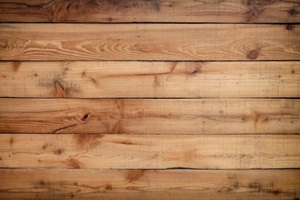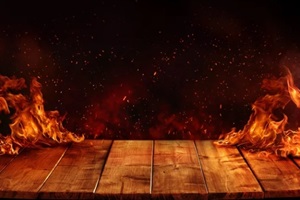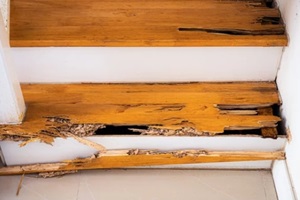 When constructing residential and commercial buildings, much more goes into the structure than just what is visible on the outside. Pressure-treated wood is a powerful option for buildings of any shape or purpose.
When constructing residential and commercial buildings, much more goes into the structure than just what is visible on the outside. Pressure-treated wood is a powerful option for buildings of any shape or purpose.
Discover the types of pressure-treated wood used in construction to withstand threats posed by fire, water and insects to enhance long-term structural durability.
Understanding Pressure Treatment
“Pressure treated” lumber is commonly thought to mean the green wood that is rot- and insect-resistant. However, “pressure-treated” wood does not, by definition, mean rot- and insect-resistant wood.
Lumber and plywood can be pressure treated to provide one of two potential advantages: fire-resistance or rot- and pest resistance. Remember: “pressure treated” refers to a process, not the type of chemical used during the treatment.
Selecting which type of pressure-treated wood is right for each application is the role of the structural designer and the contractor. Building codes guide the use of each treated wood when required for specific applications.
For situations where either fire-retardant treated or rot-resistant treated lumber can bring added value to the final product (but their use is not required), strong understanding of the difference in treatments will help align product selection with project priorities.
Fire-retardant Treated Wood (FRTW or FRT)
Wood that is pressure-treated with fire retardants take longer to ignite and burn, ensuring the greater safety of building occupants by allowing them more time to escape the building in the event of a fire.
The most readily available fire retardant treated wood can only be used in covered applications like building framing, sheathing and roof decking. There is one fire-retardant chemical, Exterior Fire-X® (XFX), that is used for applications where the wood will be exposed to the elements or high humidity. Examples include decks, pergolas, gazebos, and stables.
The functional difference between the interior fire-retardant chemicals and Exterior Fire-X is that Exterior Fire-X will not leach out of the wood over time in the presence of moisture. Neither interior fire-retardants nor Exterior Fire-X provide added protection against rot, decoy or insects. As such, XFX-treated wood needs to be painted or sealed in some manner.
Hourly Fire Ratings
For some structures, building codes require that certain elements of the building be constructed to achieve a 1-hour fire rating or a 2-hour fire rating. In other words, that element of the building should be able to sustain 1- or 2-hour exposure to open flame without losing its structural integrity.
 Fire rating relates to structural systems not individual pieces of material. A fire-retardant treated 2×4 is not “fire rated”. Instead, the structural system (e.g., load bearing wall, floor or roof structure) that the FRT 2×4 is a component of, will be given a 1- or 2-hour fire rating.
Fire rating relates to structural systems not individual pieces of material. A fire-retardant treated 2×4 is not “fire rated”. Instead, the structural system (e.g., load bearing wall, floor or roof structure) that the FRT 2×4 is a component of, will be given a 1- or 2-hour fire rating.
The hourly rating is achieved using a combination of fire-retardant treated lumber, plywood and drywall. There are standard assembly models available that show how to construct a system to achieve the 1- or 2-hour rating.
Preservative Treated Wood (PT)
Alternatively, lumber and plywood pressure treated with copper azole (CA), micronized copper azole (MCA) or chromated copper arsenate(CCA) is resistant to rot, insects, and fungal growth. Wood treated with CA or MCA is most readily available.
CCA was a commonly used preservative chemical during the latter half of the 20th century. Concerns over potential health impacts from high-concentration or long-term exposure to CCA prompted changes in regulations that restrict it primarily to commercial use, though CCA-treated plywood may still be used for certain residential applications.
Increased Longevity
When wood is pressure treated with MCA or CCA, it becomes highly resistant to moisture and fungus—two elements that can compromise the structural integrity of a building if allowed to spread unchecked.
For wood in direct contact with porous construction materials (such as the concrete used for foundations) this is especially important as untreated wood wicks moisture inward through capillary action. If non-treated wood is used in this circumstance, it will rot and decompose as moisture compromises its structure and fungus consumes the wood particles.
Wood compromised by rot and fungus is attractive to wood boring insects that further damage the wood and undermine its structural integrity. If the damage is restricted to a relatively small area, the impact may be negligible in the short term. If undetected or ignored over a longer period, the damage to the building may directly threaten the safety of those inside or in proximity of the building.
For this reason, building codes require the use of MCA or CCA pressure-treated wood for applications such as foundation work where the wood will sit below ground level, wood that is in direct contact with concrete, and structural components permanently exposed to the elements.
Pest Prevention
In addition to its resistance to moisture and fungus, MCA/CCA-treated wood is not an appealing target for pests. Ants, termites, and other unwanted visitors avoid the chemicals and salts within the wood pores.
In addition to its long term structural values, preservative-treated wood used at or below grade can act as a perimeter defense to prevent pests from penetrating further inside the home’s structure and damaging the interior framework.
About Curtis Lumber & Plywood
Curtis Lumber & Plywood, founded in 1957, is an independently owned and operated wholesale lumber dealer exclusively serving premier lumber retailers throughout the mid-Atlantic and Southeast regions of the United States. Based in Northern Virginia, we specialize in fire-retardant and preservative treated lumber and plywood for both indoor and outdoor applications.
If you are a lumber retailer and have questions about plywood or treated wood products or need to place an order by the trailer load, unit or piece, contact Curtis Lumber & Plywood at 703-552-5778.


